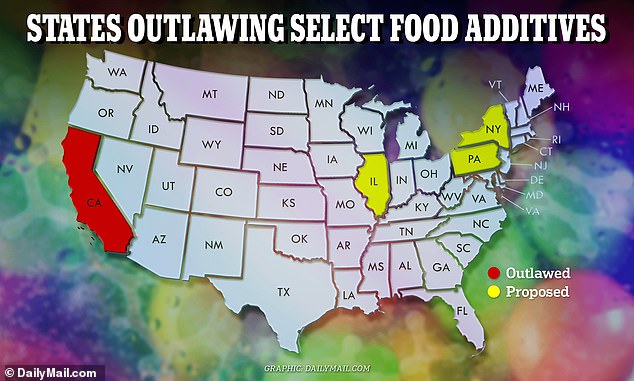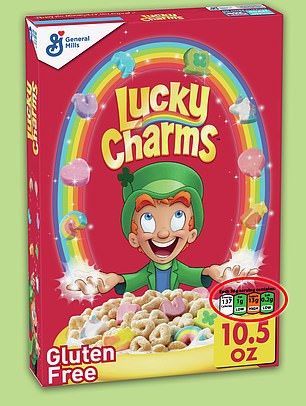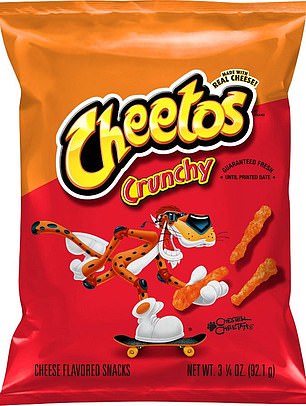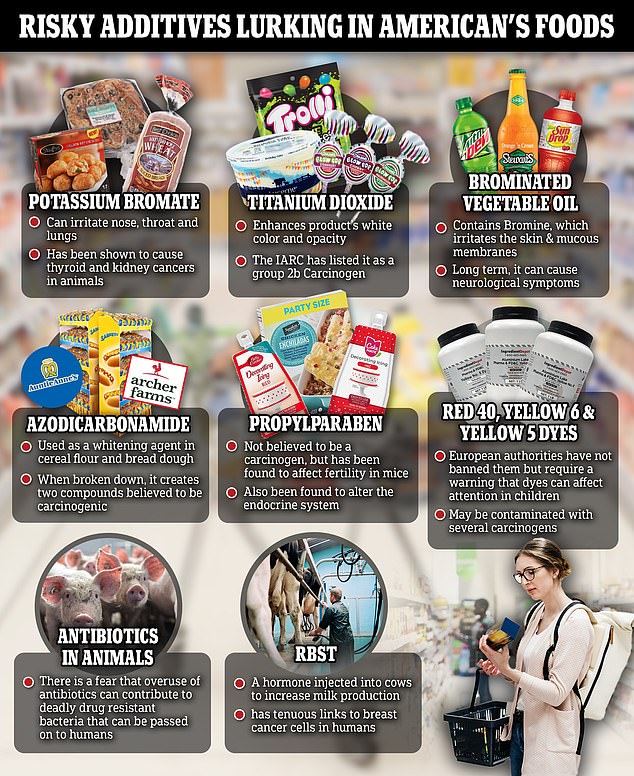California state officials have introduced a bill to ban even more popular food additives from public schools that have been linked to cancer and behavioral problems.
Democratic Assembly member Jesse Gabriel introduced a bill Tuesday that calls for banning seven ingredients found in cereal and chips like Lucky Charms, Cap’N Crunch and Cheetos.
The substances on the chopping block are Red Dye No. 40, Yellow Dye No. 5, Yellow Dye No. 6, Blue Dye No. 1, Blue Dye No. 2, Green Dye No. 3, and Titanium Dioxide.
If passed, the legislation would require foods containing these ingredients to be removed from foods served in California public schools beginning in 2025.
Gabriel also authored the California Food Safety Act, also known as the Skittles ban, which would ban the use of potassium bromate, propyl paraben, brominated vegetable oil and red dye #3.
Governor Gavin Newsom signed this bill last year, which requires all of these ingredients to be removed by 2027.
The ingredients targeted in the legislation, called Assembly Bill 2316, have been linked to cancer and behavioral problems in children such as ADHD.





Lucky Charms and Cheetos are two foods that contain ingredients in California’s latest proposed bill
“California has a responsibility to protect our students from chemicals that harm children and that can interfere with their ability to learn,” Gabriel said.
‘As a legislator, a parent and someone who struggled with ADHD, I find it unacceptable that we allow schools to serve foods with additives linked to cancer, hyperactivity and neurobehavioral damage.’
“This bill will empower schools to better protect the health and well-being of our children and encourage manufacturers to stop using these dangerous additives.”
The proposed bill is also sponsored by watchdogs the Environmental Working Group (EWG) and Consumer Reports.
Brian Ronholm, director of food policy at Consumer Reports, said: ‘These dangerous dyes should not be allowed in foods sold in schools because they put children at risk for hyperactivity and other neurobehavioral problems.’
‘Removing these harmful dyes from school meals will protect the health and well-being of California children.’
‘Consumer Reports applauds Assemblyman Gabriel for introducing this critical food safety legislation.’


Your browser does not support iframes.
The ingredients that could be banned are widespread in ultra-processed foods and have been linked to a wide range of medical problems.
Red 40 as well as yellow 5 and yellow 6 contain benzidine, a human and animal carcinogen that is permitted in low, presumably safe levels in dyes.
According to the FDA, consumption of free benzidine increases cancer risk to just below the ‘level of concern’, or one cancer in 1 million people.
Shoppers can find Red 40 in cake frosting in the back aisle, while those who love Twinkies will grab a dose of Yellow 5. Yellow 6, meanwhile, can be found in sugary breakfast cereals, including Lucky Charms and Cap’N Crunch.
The colors are not outright banned in the EU, nor are they banned in the US. However, unlike in the US, European authorities must include a warning label describing the risks associated with the dyes.
They have been theorized to exacerbate attention problems in children, prompting EU regulators to mandate that product manufacturers say the dyes can cause “an adverse effect on activity and attention in children.”
Titanium dioxide, also called E171, has been banned from being added to food throughout Europe, but it is still widely used in the United States as a bleaching agent for sweets and cakes.
Crowd favorites Skittles, Starbursts and other candies all contain the chemical compound, according to the EWG.
The FDA maintains that concentrations of the substance in US foods are safe, although the American Chemistry Council (ACC), an industry body representing US chemical companies, said a more thorough study needs to be carried out.
The International Agency for Research on Cancer has classified it as a Group 2B carcinogen, potentially posing a threat to humans when inhaled.
The designation was based on limited evidence showing that high concentrations of powdered and ultrafine titanium dioxide dust caused respiratory tract cancer in rats exposed by inhalation.
Sir. Gabriel pointed to the 2021 Office of Environmental Health Hazard Assessment, which found a link between synthetic dyes and ADHD in some children, even those not previously diagnosed with the condition.
Watchdog groups argued that “children have lower tolerance levels to chemical exposure than adults, and their developing bodies make them particularly vulnerable.”
Susan Little, senior attorney for California government affairs at EWG, said, ‘Why are foods with these toxic dyes served in schools?’
‘We know they are harmful, especially to some children. We need to protect this vulnerable group, especially from being exposed at school, a place where they eat meals and are expected to learn.’
The National Confectioners Association, which represents candy companies, said in a statement to DailyMail.com: ‘It’s time for FDA Commissioner Califf to wake up and get on the game.’
‘These activists are dismantling our national food security system state by state in an emotion-driven campaign that lacks scientific backing.’
‘The FDA is the only institution in America that can stop this sensational agenda, which is not based on facts and science.’

